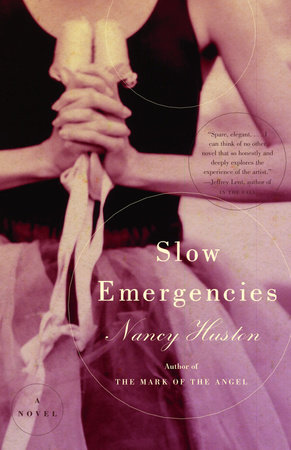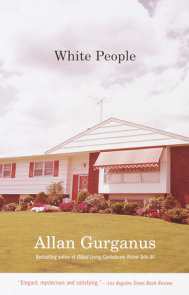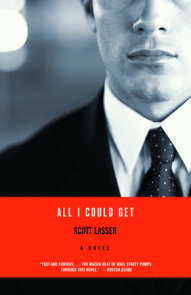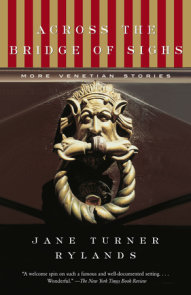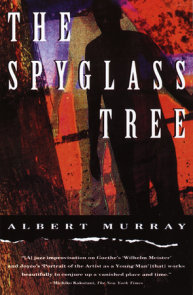READERS GUIDE
The introduction, discussion questions, suggested reading list, and author biography that follow are intended to enhance your group’s reading of Nancy Huston’s Slow Emergencies. We hope they will provide you with interesting ways of talking about this universal story of a woman who must choose between her life as a choreographer and dancer and as a wife and mother, and the repercussions of her choice on her husband and two young daughters.Introduction
Lin Lhomond and her husband, Derek, a philosophy professor at a small New England college, revel in their first child, Angela. Changing Angela’s diapers, walking the carriage in the park, and playing endless games of peek-a-boo become magical moments for Lin. But the real magic of her life will always be dance, and each afternoon she spends hours creating new pieces and practicing at the barre in her attic studio. When their second child, Marina, arrives and the demands of housework and motherhood threaten to smother Lin, she throws herself more deeply into her work, translating her ambivalent emotions into art. The all-consuming creative process and the rapturous reactions to her performances draw Lin further away from her loving, easy-going husband and from her daughters, whose needs and devotion fill her with feelings of love and awe, fear and frustration in equal measure. The girls are four and seven when Lin takes a job as the director of a dance company in Mexico City. She pursues her career with unrestrained passion and purpose, and the ties that once bound her to family and friends fray and then break. However, even as she becomes one of the world’s most renowned dancers and choreographers, Lin is haunted by unbidden thoughts and recurrent dreams about her children. Derek, trying to rescue his children and himself, marries Lin’s best friend, Rachel, who is recovering from a traumatic love affair of her own. Like Lin, the newly created family cannot fully escape the past. Derek and Rachel settle for a love that is quiet and comfortable, hiding within their hearts memories of the passions that once consumed them. Sustained by a fierce attachment to one another, Angela and Marina gradually come to terms with their mother’s abandonment; yet the paths they choose as adults reflect Lin’s enduring, ineradicable influence on their lives and characters.Questions and Topics for Discussion
1) We generally think of emergencies as unexpected events that require immediate attention. At first glance, the title Slow Emergencies is an oxymoron. How does the novel embody and make sense of this apparent contradiction? How does the narrative style reinforce the aptness of the title?
2) Why does the book open with a description of Lin giving birth? What elements of the birth scene do you find surprising or unusual? What do the thoughts and images that flicker through Lin’s mind reveal about her self-image and her feelings about motherhood? How does the language and tone Huston uses to describe Lin’s reactions to her second pregnancy and to Marina’s birth [pp. 46-48] differ from the opening scene? What is the significance of the dances Lin conceives after each birth [pp. 17, 50]?
3) Why is Lin so strongly attracted to Sean Farrell? Does Lin share his "gift for instilling discomfort" [p. 33]? Is this trait common among artists? Is it essential to creative work? Sean asks Lin, "How can you go on playing the professor’s wife in a piddly little college town–don’t you know your gift will be throttled here?" [p. 39] Is it possible to achieve a fulfilling home life and still make full use of one’s artistic gifts? Can you cite examples of performers or other artists who have done so? Is it more difficult for women than for men to achieve this balance?
4) Rachel and Lin are initially drawn together as discontented teenagers: "They had not asked to live and their interest in life was feigned and forced. . . . It was not that their ideals had been tarnished–no, they had never had ideals because they had never had mothers" [p. 12]. Is the way each girl "lost" her mother relevant to how they developed as adults? Do you think the maternal rejection Rachel suffered is as psychologically damaging as the death of a mother? Does Lin’s own abandonment as a child make it easier for her to leave her own daughters?
5) In what ways does Bess influence Lin’s ideas about motherhood? Despite her disdain for her stepmother, does Lin recognize qualities in Bess that she admires or even envies?
6) After taking Angela to visit her father and stepmother Lin "rages inwardly against reality" [p. 23]. To what extent is Lin’s intense obsession with dance an expression of this rage? What other emotions or needs underlie the demands Lin makes of herself and her dancers and the result she strives for [pp. 20, 108, 115]?
7) Throughout the book there are references to fairy tales and folklore. How do they enhance both the themes Huston explores and the atmosphere she creates?
8) Lin contemplates the lives and accomplishments of other dancers, including Vaslav Nijinsky, Isadora Duncan, Twyla Tharp, and Martha Graham. What parallels are there between Lin’s struggles and those of these legendary dancers? Lin’s fascination with Isadora Duncan is particularly striking. Do you think that Lin, either consciously or subconsciously, has chosen Duncan as a model?
9) Why does Lin send Angela to ballet school, rather than teaching her herself [p. 56]? Is she protecting her daughter from what she knows is a difficult life, or is there something more at stake for Lin?
10) As she watches Angela and Marina play, Lin thinks, "Never again will my daughters be newborn babies but the dance is perpetually newborn, the dance does not grow so strangely and unpredictably" [p. 64]. Does this passage reflect Lin’s inability to accept reality or does it capture a common feeling about motherhood? Is Derek a "better" parent than Lin is? Is his behavior unusual for a father today? How does the scene with Derek’s parents [p. 80] bring to light the fundamental differences between Lin and Derek and their approach to parenthood? Why does Lin intentionally provoke Violet by discussing Mary Wigman’s Dance of Niobe and her own project, Pietà?
11) What role do Lin’s dreams [pp. 16, 74, 85, 109] play in the plot? For the most part, do the dreams contradict or support the feelings Lin consciously acknowledges?
12) The female characters in Slow Emergencies are haunted by thoughts and fears of death. In what different ways do Lin, Rachel, Angela, and Marina express their fears and attempt to take control of them?
13) When Derek and Rachel talk about Lin, they conclude that she feels "guilty . . . but not remorseful" [p. 136]. Is this a valid moral distinction? Does the portrait of Lin that unfolds simultaneously support this assessment?
14) How honest are Derek and Rachel with themselves and each other about their decision to get married? When the family attends Lin’s performance, Huston writes "Derek detests Rachel both for knowing exactly why he is upset and for forgiving him" [p. 146]. What does this show about the nature of their marriage? Why do you think Rachel so readily forgives Derek? How does this compare with Derek’s reaction upon discovering Rachel’s meetings with Sean Farrell [pp. 151-2]?
15) Angela and Marina have very different personalities, yet "the affection between them . . . is a fortress that protects them both" [p. 154]. What needs do they fulfill for one another? In what ways have the adults in their lives–Lin, Derek, and Rachel–influenced their personalities and their beliefs? Why is Marina more attached to Rachel than Angela is? Is this merely a reflection of the difference in their ages when Rachel and Derek marry? What does Marina’s interest in the Holocaust reveal about her intellectual and emotional makeup? Why does she identify herself as a Jew when she runs away from Lin in Berlin [p. 160]? What is the significance of Angela’s promiscuity as a young woman? How does her decision to become an actress and comedian both link her to and separate her from her mother?
16) Lin’s career takes a surprising turn at the end of the book. How does the dance she chooses to work on–Nijinsky’s Butterflies of the Night–become a metaphor for the powerful hold of the dance on her sense of identity and the tremendous costs her devotion has exacted?
17) In different configurations, the characters all visit the bridge near their New England home [pp. 36, 78, 127, 173]. Why do so many significant events occur there? What does the bridge symbolize in terms of the relationships among the characters?
18) Slow Emergencies deals with two distinct realms of experience–the professional world of dance and the private world of home and family. Is Huston equally successful in portraying them? In the end, does one world seem more real than the other? Where do you think the author’s own sympathies lie?







